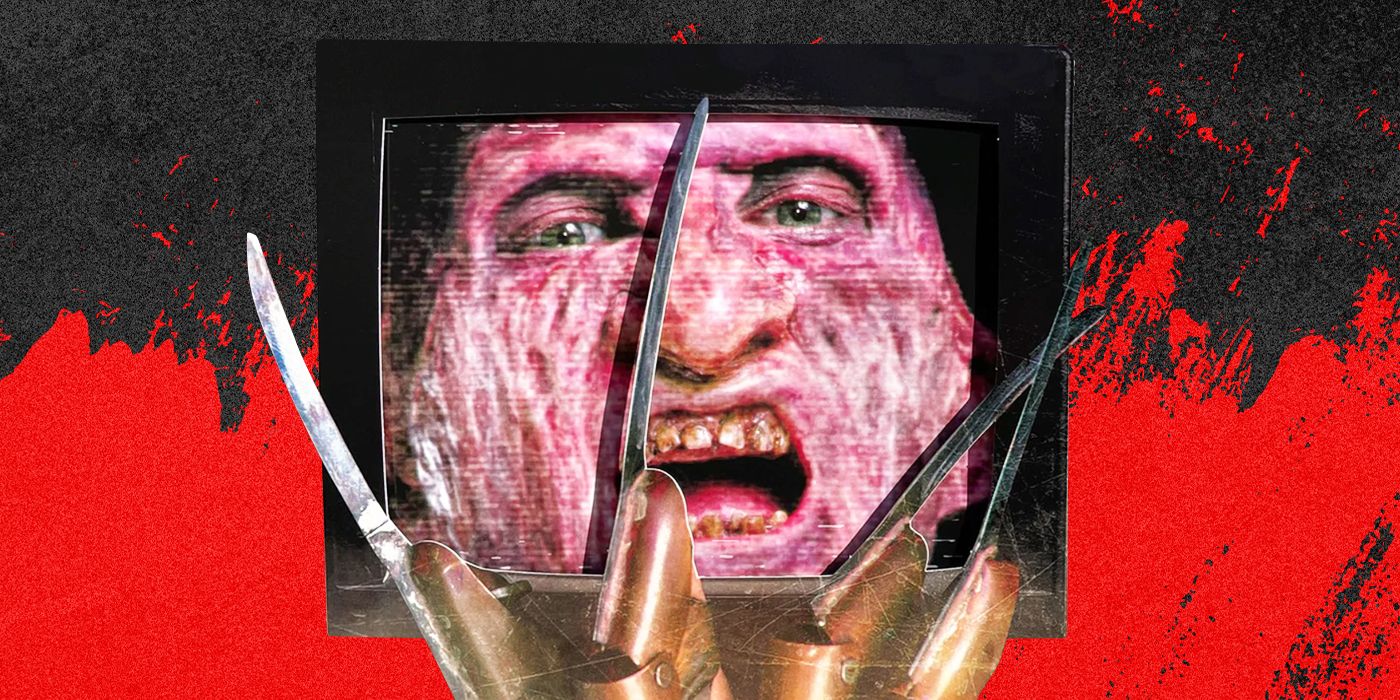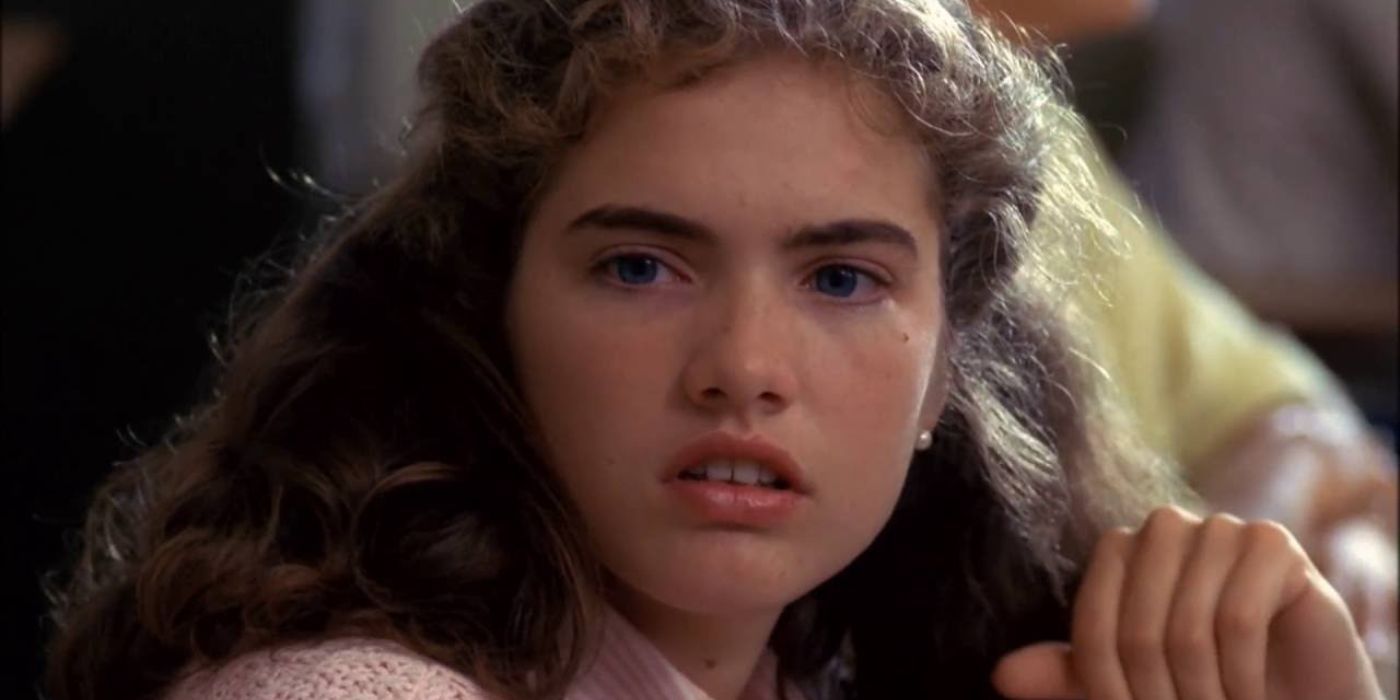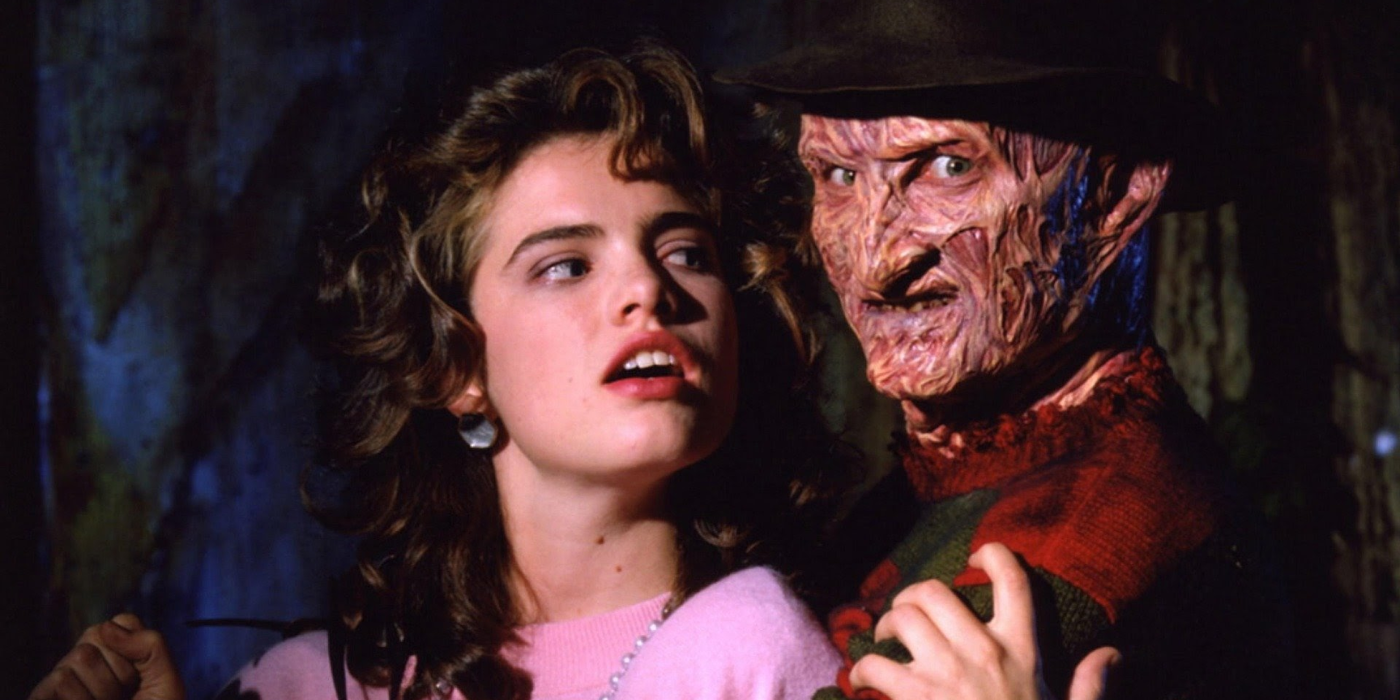The Big Picture
- Wes Craven’s original vision for A Nightmare on Elm Street included a happy ending, but the producer Bob Shaye insisted on a jump scare to set up a potential franchise.
- The decision to change the ending prioritized Freddy Krueger over the strong female protagonist, Nancy Thompson, which reflects societal preferences and the desire for box office success.
- Despite the change in ending, Freddy Krueger’s unique presence, iconic aesthetics, and Robert Englund’s performance propelled the franchise to success, establishing New Line Cinema as “the house that Freddy built.”
By definition, it’s not often a horror film ends with a happy ending. Certainly, there are exceptions depending on the subgenre and the creator’s story goals, but as a whole, horror equals violence, dread, and a survival that’s tainted with some kind of traumatic misery. If the genre-defining multiple-times-over director Wes Craven had his way with the original A Nightmare on Elm Street, however, not only would the ending have changed the film’s tone entirely, there might not have been a franchise at all.
A Nightmare on Elm Street (1984)
Teenager Nancy Thompson must uncover the dark truth concealed by her parents after she and her friends become targets of the spirit of a serial killer with a bladed glove in their dreams, in which if they die, it kills them in real life.
- Release Date
- November 16, 1984
- Rating
- R
- Runtime
- 91 minutes
Wes Craven Wanted ‘A Nightmare on Elm Street’ To Have a Happy Ending
The original 1984 A Nightmare on Elm Street was an underdog tale from the start. Wes Craven wrote the Nightmare script after filming three features (The Last House on the Left, The Hills Have Eyes, and Swamp Thing) but finding himself financially destitute. In a 2014 retrospective with Vulture for A Nightmare on Elm Street‘s 30th anniversary, Craven shared: “I couldn’t get any work. No paycheck for three years. I lost my house. […] Finally, I walked away from the drugs. And I had this one idea, so I set off to write a script.” Unfortunately, Craven’s poor luck continued. The heyday of the Halloween and Friday the 13th style slasher was dying; no studio wanted to take a chance on A Nightmare on Elm Street, which, with the benefit of hindsight, is amusingly ironic. “I have the rejection letter from Universal framed on my office wall,” Craven added.
Only one person believed in Craven’s dream-killer conceit. Bob Shaye, the film’s producer and the founder of New Line Cinema, had experience distributing films to college campuses and was tiptoeing into original low-budget projects. New Line’s finances weren’t considerable. But Shaye gave Craven a budget of $700,000 to shoot A Nightmare on Elm Street, which ballooned into over 1 million. Shaye told Vulture, “All the investors, at one time or another, backed out during pre-production. Half the funding came from a Yugoslavian guy who had a girlfriend he wanted in movies.”
The fact that A Nightmare on Elm Street made it to production, let alone finished filming, makes the minusculely budgeted but massively imaginative horror masterpiece the little movie that could. The one major hiccup came when Craven and Shaye disagreed over the movie’s ending. Craven’s original conclusion prioritized the arc of Final Girl Nancy Thompson (Heather Langenkamp). Her triumph over Freddy Krueger (Robert Englund) was an undisputed win, leaving the villain destroyed and Nancy’s life restored to normal. “Wes had written an ending where Heather vanquishes Freddy and goes off to school the next day,” Shaye explained. “It’s beautiful sunshine, and that’s the end.”
Craven’s idea is peaceful and pensive almost to the point of anticlimactic. It was also conclusive, and that was a problem for Shaye, who wanted to build a financially successful fradnchise. Shaye insisted they bring Freddy Krueger back for one last jump scare. The moment ruined Craven’s happy ending, but it mimicked the “gotcha” endings of other slasher moneymakers and dangled the promise of a sequel. As Craven recalled, “I felt that the film should end when Nancy turns her back on Freddy and his violence — that’s the one thing that kills him. Bob wanted to have Freddy pick up the kids in a car and drive off, which reversed everything I was trying to say — it suddenly presented Freddy as triumphant. […] Do I regret changing the ending? I do, because it’s the one part of the film that isn’t me.”

How in the Hell Is ‘Nightmare on Elm Street’ Based on a True Story?
Just when you thought it couldn’t get any scarier…
Why Did New Line Cinema Change Wes Craven’s Ending to ‘Nightmare on Elm Street’?
As it stands, A Nightmare on Elm Street‘s semi-infamous ending (the dummy Krueger pulls through the front door is a dodgy horror effect for the ages) doesn’t track with the film’s established logic. Krueger shouldn’t have power in the waking world. Moreover, just like Craven worried, letting Krueger get the final say negates Nancy’s victory. A proactive teenage girl fought a dream demon in his territory and won even after he had massacred her closest friends and her mother. Nancy literally turns her back on Krueger and hisses, “You’re shit,” which strips Krueger of his power. It’s a beautiful metaphor; not to mention Nancy’s fierce defiance, intuitive intelligence, and relatability — she dresses like a normal high schooler! — makes her the defining Final Girl.
Instead, Bob Shaye wanted to highlight the appeal of Freddy Krueger over an everyday but extraordinary heroine. There’s certainly something to say about prioritizing the sadistic villain over the woman who survives him, and what such a choice reflects about studio executives and what society chooses to consume. Craven explored the concept in his meta masterpiece Wes Craven’s New Nightmare, which unequivocally centers Nancy, while actress Heather Langenkamp made a documentary examining the topic titled I Am Nancy. As she shared with Entertainment Weekly in 2011 before the documentary’s debut, Langenkamp felt ignored by Hollywood executives and fans alike for decades. Despite her appearance in A Nightmare on Elm Street 3: Dream Warriors, all the attention went to her nightmarish nemesis instead of her empowered and unconventional heroine. Langenkamp recalled a specific incident when “the secretary [at Wes Craven’s office] asked me to spell [my last name]. People didn’t think about Nancy and Freddy as a duo. But there’s a certain amount of actor’s pride — you work every day on a movie and…this is what you have to show for it?”
In Wes Craven’s defense as A Nightmare on Elm Street‘s sole creator, it’s almost always a shame for a director’s vision to be overthrown in the name of box office revenue. Nevertheless, despite Nancy being this writer’s ride-or-die Final Girl, there’s little doubt the A Nightmare on Elm Street franchise thrived on Krueger’s unique presence and Robert Englund’s delightfully perverse performance. Craven intentionally made Krueger a menacing villain who wittily taunted his victims. Krueger’s obvious personality contrasted with the brooding, blank silence of Halloween‘s Michael Myers and Friday the 13th‘s Jason Voorhees. That malignant charm combined with his burned face, the knife glove, and the stripped sweater defined the franchise. Krueger also had a narrative leg up against the constantly resurrected Michael Myers and Jason Voorhees: not only does he exist in dreams, he’s basically a demonic entity. It’s impossible to win against Krueger. He always returns in an endless cycle, just like nightmares can’t be eradicated. I don’t care what you say, he won Freddy vs. Jason.
Beyond those iconic aesthetics, however, Freddy Krueger stood alongside and eventually rose above his slasher peers thanks to the magnificently wicked work of Robert Englund, whose lethal intent was as undeniable as the impish glint in his eye. Even the worst Nightmare entries, those absolute dirges that induce hopeless facepalming among fans, have a spark of charm thanks to his arresting presence. The actor wielded even the lamest material with competent grace, which helped Nightmare take on a life of its own. “Robert understood Freddy,” Craven said of the soon-to-be star. Future installments reflected that fact, increasing Krueger’s screen presence until he was synonymous with the title — not Nancy, the young woman who bested him.
New Line Cinema Is ‘The House That Freddy Built’
Krueger also won at the box office. At the time of its release, A Nightmare on Elm Street grossed $24 million. “We’d had films that were successful,” Bob Shaye told Vulture, “but nothing of that magnitude. For New Line, it was a kick-starter.” Jack Sholder, the director of A Nightmare on Elm Street 2: Freddy’s Revenge, confirms that New Line Cinema is colloquially referred to as “the house that Freddy built.” Without that tease to show audiences that Freddy Krueger wasn’t going anywhere, it’s likely that the studio wouldn’t have developed its dream-killer franchise into the pop culture behemoth it became.
From a practical standpoint, most slasher franchises can’t flourish on a standalone with a happy ending that purports similar happy endings. Even if Wes Craven’s original conclusion remained intact, that would have meant extra leg work marketing the sequel. Poor special effects and the devaluation of Nancy’s ending notwithstanding, the ending simply wouldn’t be as dynamic. Bob Shaye’s mood of inescapable inevitability informed the entire series. Plus, audiences won on both counts: Nancy returned as an even greater badass for A Nightmare on Elm Street 3: Dream Warriors, and we live in a world where Robert Englund starred as Freddy Krueger for eight whole movies. What’s not to love?
A Nightmare on Elm Street is available to stream on Prime Video.
Watch on Prime Video
Source link


